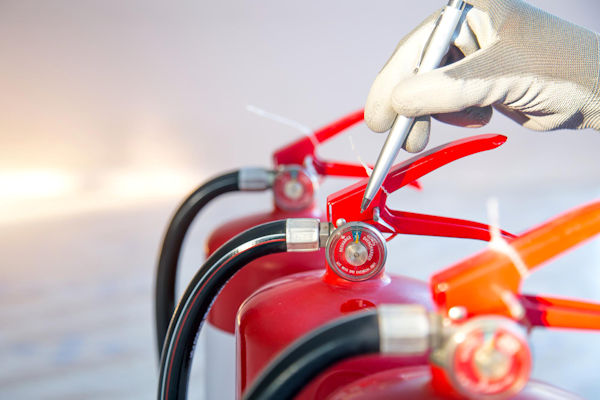Embarking on a journey aboard a luxury yacht offers unparalleled experiences — breathtaking sunsets, serene mornings by the sea, and the sheer joy of open waters. However, the beauty and grandeur of the ocean come with inherent risks. Whether you’re a seasoned sailor or someone new to the world of yachting, the safety of all on board remains paramount. In this guide, we’ll delve into the intricacies of ensuring a safe and memorable voyage. From the sun-kissed decks to the humming heart of the engine room, we aim to cover all the key areas that demand your attention when it comes to yacht safety.
Deck Safety: From Sunrise to Sunset
The deck, often the most frequented part of the yacht, holds many delights. It’s where we bask under the sun, enjoy panoramic views, and perhaps even have our morning coffee or evening cocktail. But it’s also a place where many potential hazards lurk, often disguised by the yacht’s aesthetics and luxury.

Proper Footwear: Starting from the ground up, your choice of footwear can make a significant difference. While it might be tempting to walk barefoot or don chic high heels, it’s essential to opt for non-slip shoes. These provide the necessary grip, especially when the deck becomes wet and slippery.
Railing Safety: The railing isn’t just a design element; it’s a crucial safety feature. Always ensure that railings are sturdy and free from any damage. Regular checks are a must, and remember never to lean too heavily or sit on them.
Securing Loose Items: The sea can be unpredictable. What starts as a calm journey can quickly turn into a choppy ride. Loose items on the deck can become hazardous projectiles. Regularly check the deck for any items that can be stowed away or secured.
Slip Hazards: Wet decks, occasional oil spills, or even a forgotten towel can become potential slip hazards. Regular cleaning and immediate attention to spills can prevent unfortunate accidents.
Sun Protection and Hydration: As delightful as it is to sunbathe, prolonged exposure can lead to sunburns or even heat strokes. Always have sunblock at hand and wear protective hats or clothing. Equally crucial is staying hydrated. With the sun overhead and the salty sea breeze, dehydration can occur faster than one might realize. Keep a steady supply of water and encourage everyone on board to drink regularly.
Stay with us as we continue our journey through the yacht, ensuring every nook and corner is as safe as it is luxurious. Safe yachting is responsible yachting, and with this guide, you’ll be well on your way to ensuring the safety of everyone aboard.
Below Deck: Ensuring a Safe Living Space
Journeys at sea, for all their allure, bring with them the challenge of ensuring safety in a unique environment. While the deck of a yacht offers panoramic beauty, the spaces below deck are where we live, rest, and rejuvenate. But just like our homes on terra firma, these spaces need their safety checks.

Fire Safety: The confined spaces below deck can make fire hazards particularly menacing. Ensuring that there are accessible fire extinguishers, regularly checked and maintained, is a must. Additionally, smoke detectors should be strategically placed, especially in sleeping and kitchen areas. Regular drills will familiarize everyone on board with the quickest escape routes, ensuring that in the unlikely event of a fire, panic doesn’t exacerbate the situation.
Carbon Monoxide Detection & Ventilation: Carbon monoxide (CO) is a silent danger, being odorless and colorless. CO detectors are essential in sleeping quarters and any areas where fossil fuels are burned. Proper ventilation ensures a steady supply of fresh air, helping to prevent CO buildup. Regular maintenance of heating systems, engines, and any gas-powered appliances will further reduce the risk.
Air Quality Considerations: Beyond CO, ensuring good indoor air quality is vital for the comfort and health of everyone aboard. This means routinely checking and cleaning air filters, ensuring mold-preventing ventilation in bathrooms and kitchens, and being aware of any potential allergens or pollutants that might be introduced into the living spaces.
Engine Room Precaution
The engine room, the beating heart of any yacht, is a nexus of power, technology, and potential hazards. While it ensures our voyage is smooth and uninterrupted, it also demands the highest levels of attention and safety precautions.
Routine Checks & Maintenance: An engine room’s efficiency is only as good as its maintenance schedule. Regular checks can preemptively identify wear and tear, leaks, or other issues before they become significant problems. A detailed log should be maintained, noting any repairs, replacements, or anomalies.
Safety Gear & Procedures: Given the nature of machinery and potential for things like oil spills, personal protective equipment (PPE) such as gloves, eye protection, and non-slip footwear is a must for anyone entering the engine room. Clear procedures should be established for every routine task, and all personnel should be trained to follow them meticulously.
Potential Hazards & Their Mitigation: The engine room, with its moving parts, high temperatures, and chemicals, can be a hub of hazards. Awareness of these, from hot surfaces to the correct handling and storage of chemicals, is vital. Proper signage indicating potential dangers, combined with training and drills, can go a long way in preventing accidents.
Navigation & Communication: Staying on Course and in Touch
Navigating the vastness of the ocean or coastlines requires more than just intuition and a good sense of direction. In the modern age, the marriage of technology and traditional seafaring skills ensures that yachts can journey with precision and safety. Likewise, maintaining robust communication lines, both within the yacht and with the external world, is essential for a safe and enjoyable voyage.
Navigation Tools & Their Safe Usage: Today’s yachts come equipped with state-of-the-art navigation systems, ranging from Global Positioning System (GPS) devices to radar systems and electronic charts. While these tools offer accuracy and real-time data, it’s crucial for those operating them to be adequately trained. Misinterpretations or over-reliance on a single tool can lead to dangerous situations. It’s also wise to be acquainted with traditional navigation methods like the use of sextants or paper charts as backups.
Backup Methods for Navigation: Even the best technology can falter. Whether it’s due to system failures, dead zones, or any other unforeseen situations, having backup navigation tools is vital. Battery-operated handheld GPS devices, paper charts matched with manual plotting tools, and a trusty magnetic compass can be life-savers. Regularly updating and checking these backup tools ensures they’re ready to use when needed most.
Communication Devices for Onboard & External Connectivity: Seamless communication aboard a yacht serves two primary purposes: coordination and safety. Intercom systems, walkie-talkies, or even designated smartphones can be used for intra-yacht communication, ensuring everyone is always in sync. For external communication, satellite phones, VHF radios, and emergency beacon systems like EPIRB (Emergency Position Indicating Radio Beacons) are indispensable. These tools not only keep the yacht connected to ports, other vessels, or emergency services but can also be crucial in distress situations.
Water Activities: From Jet Skis to Diving
The allure of open water is irresistible, especially when aboard a yacht. Whether it’s the thrill of jet-skiing, the serenity of snorkeling, or the adventure of diving into the deep, water activities enhance the yachting experience. But with the thrill comes responsibility. Ensuring safety while indulging in these activities is paramount.
Safety Precautions for Various Activities:
Snorkeling & Diving: Always dive or snorkel with a buddy. Be aware of currents, depth, and marine life. For those diving, ensure you’re certified and always monitor your air levels.
Jet-skiing: Familiarize yourself with the jet ski’s controls before heading out. Stay within designated areas, always be aware of your surroundings, and maintain a safe distance from the yacht and other watercraft.
Swimming: Even the most experienced swimmers can find the ocean challenging. Always swim in designated safe zones, preferably when the yacht is anchored. It’s wise to have a lookout – someone who stays on board to keep an eye on the swimmers.
Equipment Checks & Safety Gear: Before engaging in any water activity, a thorough check of equipment – from snorkel masks to jet ski engines – is crucial. Equipment failures in the water can be more than just inconvenient; they can be dangerous. Also, ensure that everyone, irrespective of their swimming capabilities, knows how to use safety gear. Life vests, flippers, or even simple floaters can make a significant difference in emergencies.
Emergency Procedures & Drills
While we all hope our yachting adventures are smooth sailing, it’s vital to prepare for the unexpected. Emergencies, by their very nature, strike without warning. Being prepared can be the difference between a minor hiccup and a major catastrophe.
Importance of Regular Drills: Familiarity breeds efficiency, especially in high-pressure situations. Regular drills for potential emergencies such as man-overboard situations, fires, or even water ingress ensure that every crew member and passenger knows their role. Drills help transform theoretical knowledge into practical, instinctive action.
Accessible and Clear Emergency Plan: Having a plan is just the first step; ensuring it’s accessible to everyone on board and is easy to understand is equally important. The emergency plan should be displayed prominently in common areas. It should be clear, concise, and, if possible, include diagrams or pictorial instructions. Whether it’s a designated muster point or the steps to activate an emergency beacon, every instruction should be unambiguous.
Weather Wisdom: Preparing for the Unexpected
The allure of the open sea can sometimes be matched by its unpredictability. While sailing under clear, blue skies can be a dream, the ever-changing nature of marine weather can turn that dream into a challenge. Being equipped with not just the right tools, but also the wisdom to interpret and act on weather information, is essential for every yachting journey.
Tools for Weather Forecasting:
Marine Weather Radio: This is a staple for mariners. It provides continuous weather updates and alerts, specifically tailored for maritime environments.
Satellite Phones with Weather Apps: In regions where traditional signals may falter, satellite phones can provide vital weather updates. Many marine-specific apps provide forecasts, storm alerts, and other essential data for yachters.
Barometers: A traditional tool, but still invaluable. A rapidly falling barometer can be an early indication of an approaching storm.
Radar Systems: Advanced yachts often come equipped with radar that can detect storm fronts, allowing for timely decision-making regarding course alterations.
Preparations and Considerations for Potential Rough Weather:
Secure Loose Items: Whether it’s on the deck or inside the yacht, ensure all loose items are stowed or secured. In rough seas, unsecured items can become hazards.
Adjust Your Course: Sometimes, the best way to deal with an approaching storm is to steer clear of it. Continuous weather monitoring can help you make informed decisions about course adjustments.
Ensure Communication: Make sure all communication devices are functional. Inform relevant authorities or nearby vessels about your position and intended course if you anticipate extreme weather.
Safety Gear at the Ready: Ensure that life vests, lifelines, and other essential safety equipment are easily accessible. In rough weather, it’s wise to have everyone, especially those on deck, wear their safety gear.
Engine Check: In challenging weather conditions, you’ll want to be sure your engine is in optimal condition, providing an option beyond sails. A timely engine check can be a lifesaver.
Food & Culinary Safety on Board
The culinary experience on a yacht is an integral part of the journey. From fresh seafood to gourmet meals, dining at sea is both a pleasure and a challenge. Ensuring food safety, especially in a marine environment, becomes paramount to guarantee that every meal is not only delicious but also safe.
Best Practices for Storing, Handling, and Preparing Food:
Temperature Control: Refrigerators and freezers should be regularly checked to ensure they maintain the right temperatures. Separate zones for meats, dairy, and produce can prevent cross-contamination.
Fresh Produce: Given the longer duration of some yacht journeys, prioritize the consumption of items that perish quickly. Always wash fruits and vegetables with safe water before consumption.
Cooking Standards: Ensure meats and seafood are cooked to recommended internal temperatures to eliminate potential pathogens.
Hygiene: Hand washing and surface sanitation are even more crucial aboard a yacht. Given the confined space, any illness can spread rapidly. Regularly sanitize cooking surfaces, utensils, and always emphasize personal hygiene among crew and guests.
Water Safety and Storage Considerations:
Storage: Store water in clean, food-safe containers. Regularly check for any signs of contamination or algae growth, especially in larger tanks.
Purification: If sourcing water from less reliable places, consider having onboard water purification systems or equipment.
Conservation: While it’s essential to have ample water, conservation practices should be in place, ensuring there’s always enough for drinking, cooking, and hygiene.
Concluding Thoughts & Continued Learning
The sea, with its vastness and beauty, beckons many, but with its call comes the responsibility of safety. While this guide provides a foundational understanding, safety aboard a yacht is an ongoing journey of learning and adaptation.
The Ongoing Importance of Safety Training, Updates, and Refreshers:
Safety isn’t a one-time lesson; it’s a continuous process. Regular training sessions, updates on new equipment or procedures, and refresher courses ensure that everyone onboard remains sharp and prepared.
Recommendations for Continued Learning:
Courses & Certifications: Institutions like the American Sailing Association or the Royal Yachting Association offer courses ranging from basic marine safety to advanced navigation.
First Aid & CPR Training: Given the isolated nature of yachting, having multiple people onboard trained in first aid and CPR can be invaluable.
Books & Publications: Books like “The Annapolis Book of Seamanship” or regular subscriptions to marine journals and magazines can provide a wealth of knowledge and updates.
Embarking on a yacht is not just about the journey or the destination; it’s about ensuring that every moment, whether at anchor or full sail, is underlined by the tenets of safety. Whether you’re a seasoned mariner or a guest eager for a maritime adventure, remember that safety is a collective endeavor, and knowledge is your compass. Safe voyages and calm seas to all!
Do you have any feedback or additional insights? Please send an email to editor @ yachtsurf.com





